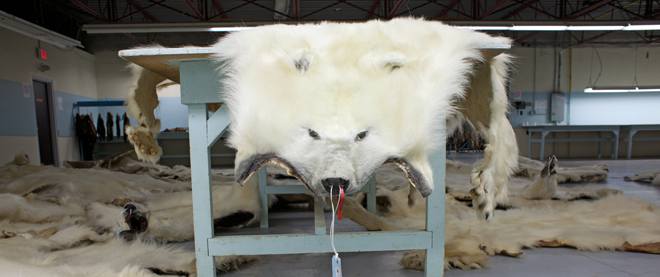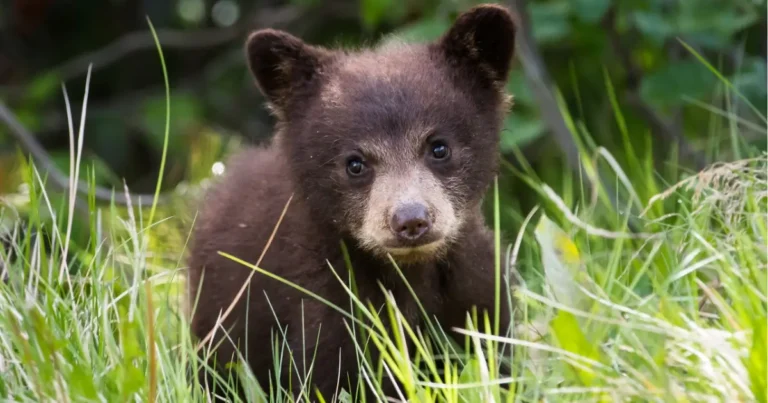
To say that Reiss’s connection ends at his advisory involvement would be a huge understatement. Canada Goose is also a Platinum sponsor of the organization. In fact, you can buy Canada Goose products right off PBI’s website!
But surely despite his decision to use fur in his products, and celebrate the fur trade as “an excellent example of an industry based on sustainable use”, he would support any and all efforts to protect the polar bear, an animal he “has a passionate commitment” for. In fact, Reiss claims that he also has a passionate commitment to “the Far North, and the preservation of all wild creatures and places.” Well, not all wild creatures, and certainly not the coyotes killed for the trim on his parkas.
If you asked PBI why the polar bear is in trouble, they’d tell you that climate change is the real culprit. And they wouldn’t be lying. But they also wouldn’t be telling the truth. They’d be neglecting one major fact. A fact that most Canadians don’t know. It’s such a secret that a recent Macleans article came out titled “We’re shooting polar bears?!?” As Köhler says in his article,
“Many Canadians are likely unaware of the international trade in polar bear skins, particularly since the animal has become a sort of four-legged shorthand for climate change—that solitary beast swimming into a vast expanse of iceless sea in An Inconvenient Truth.”
That’s right. Canada is the only country in the world where polar bears are hunted for sport and commercial trade purposes. Each year, between 500-600 Canadian polar bears are killed for their fur (and parts) to be sold on the international market. Increasing interest in polar bear pelts, coupled with climate change, poses a very real threat to Canada’s polar bears.
To help protect the polar bear, the United States (backed by Russia) are once again pushing for an international ban on the trade of polar bear pelts and parts. This March, nations belonging to the Convention on International Trade in Endangered Species (CITES) will meet to consider adding new animals to the convention’s list of endangered species.
If polar bears are added to that list, it would mean an end to the Canadian-only business of selling polar bear pelts and parts internationally. According to the National Resources Defence Council, a listing of the polar bear on CITES Appendix I will not affect the ability of native peoples to continue to use polar bears. The listing will only stop the international commercial trade in polar bears and their parts. International commercial trade is not a subsistence activity.
Surely such a momentous opportunity has wildlife advocates campaigning to ensure that polar bears are added to the convention’s Appendix I. Not PBI. In fact, their position statement claims that banning the hunting of polar bears “could serve as a distraction from the real issue of global warming”.
This is especially confusing because only a couple years earlier, PBI published the following statement about Obama’s earlier refusal to reclassify the polar bear under Appendix I:
What changed their tune? Why did they earlier argue that a reclassification would actually push climate change action, and now they’re arguing it would distract from it? And how is it possible that a group solely dedicated to conserving polar bears could be vocally opposed to protecting them from sport and trophy hunting? Could it be that Reiss, their Platinum sponsor, is defending his pals in the commercial fur trade at the cost of real, measurable protection for the polar bear? After all, Reiss gets the majority of his coyote pelts from Fur Harvesters Auction in North Bay, one of the only two auction houses in Canada that actually sells polar bear pelts (an auction house that claims to be enjoying ‘record prices’ for pelts).
Instead of using their resources and influence to truly protect the polar bear, PBI would rather you just fork over $250 to “adopt” a plush one, which, thankfully, is not made with real polar bear fur. But if Dani Reiss has his way…

Photograph by Jessica Darmanin
What you can do:
Sign our petition that calls on Prime Minister David Cameron to lead the European Union to a vote that will end the sport/trophy hunting of polar bears once and for all, and share it with loved ones. Securing support from the UK is of paramount importance, because they could potentially swing the vote in favour of protecting polar bears.
